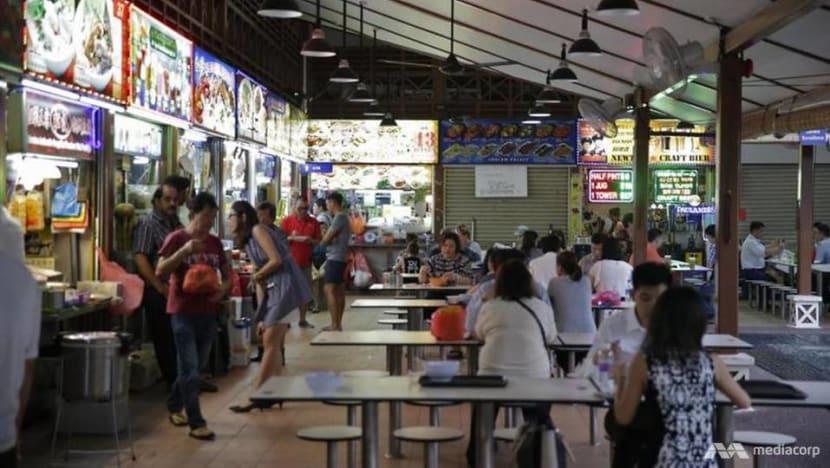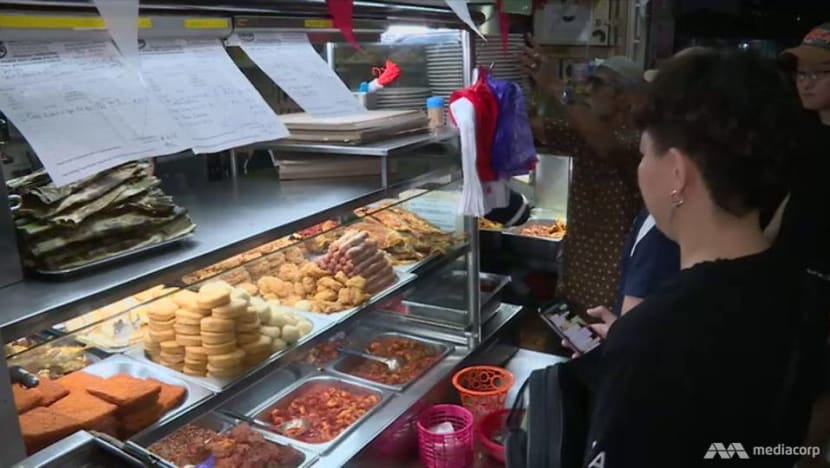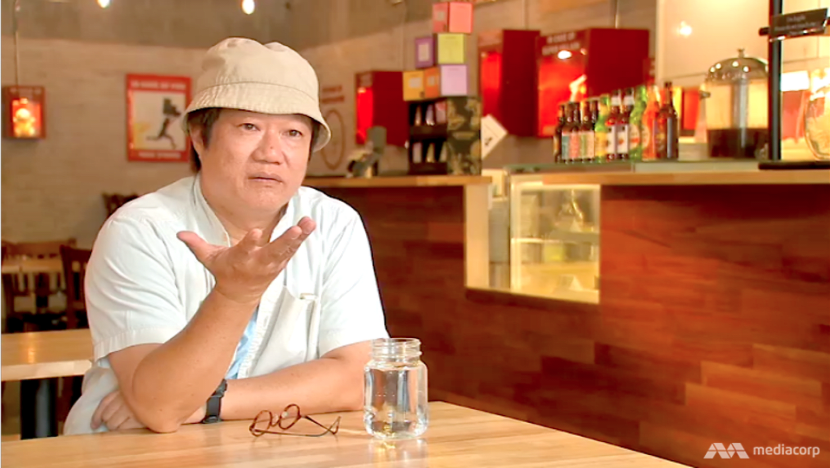Profit margins for hawker fare? As low as 20 to 30 cents
Some consumers are unwilling to pay more for that bowl of fish ball noodles or ban mian, as Talking Point discovers. What might it take for higher prices to be more palatable?

File photo: TODAY
SINGAPORE: When young hawker Douglas Ng was operating a fish ball noodle stall at the Golden Mile Food Centre, he found himself struggling to turn a profit.
At S$3 for a bowl of handmade fish ball noodles, he had a stream of customers – and has since won a Michelin Bib Gourmand award – but his margins were worn thin by his costs.
He raised his price by 50 cents, but to his dismay, his business dropped by 40 to 50 per cent.
“If I say that food pricing should be more expensive, I tell you, the consumer would go and hammer me,” said the 27-year-old.
“But look at … the utility costs, the rental and the salary that we’re paying. It’s no longer S$1,200, S$1,300. These hawkers, to find an assistant, are easily paying S$1,800 to S$2,400.”
Good-quality hawker food can only come from increasing the prices of the fare, he still reasons. But some consumers are also still unwilling to fork out that bit more for their hawker food, as the programme Talking Point discovers.
With hawkers pressured into keeping prices low but finding business unsustainable over the long run, while the younger ones are largely unwilling to join the trade, what might it take for change to happen? (Watch the episode here.)

CONSUMERS UNAWARE
A hawker’s life has always entailed long hours, but Mr Tan Kim Leng, who sells prawn noodles at Tiong Bahru Market and Food Centre, agrees that it is much harder today, compared to about 20 years ago when he started.
“At that time, everything wasn’t so expensive,” said the 49-year-old.
The food cost, salaries for the workers – all these have gradually increased … so there’s stress on us.
Fresh prawns, for example, used to cost him about S$10 per kilogramme six years ago but that price has increased by 50 per cent.
As he sells about 20 kg of prawns daily and works six days a week, that works out to about S$2,400 more every month.

Mr Ng, who started The Fishball Story in 2013, disclosed that his net profit from selling a bowl of noodles at S$3 was 20 to 30 cents.
“That’s the margin … and it’s pathetic,” he lamented. “It’s very difficult for (hawkers) to continue selling cheap food any more.”
But does the public know the profit margins some hawkers earn from each dish? Those interviewed by Talking Point grossly overstated the amount.
One man thought the profit margin for a plate of nasi lemak was S$1 to S$1.50. When told it was 30 cents, he exclaimed: “I don’t believe it. How to survive with that!”
Another man was also surprised at the same profit margin for a S$3.50 bowl of ban mian (flat noodle soup), thinking it was S$1.50 instead.
But despite saying that 30 cents was a low margin, he would not pay for the same bowl if the price were S$4. “I’d change my food,” he said. “Because hawker food is mostly catered for the low-income group.”
IT’S ABOUT IMPRESSIONS
Given how price sensitive consumers can be, hawkers like Mr Tan are loath to increase prices. “That’s the last thing I’d consider,” he said, agreeing that hawker centres are supposed to be economical eating places.
“So we have to extend our working hours by one to two hours. Last time, I opened my shop at about 9am, but right now I open my shop at 7.30am or 7.45am … to balance the food cost.”
As for hiring a stall assistant, there is no guarantee the person would even stay.
“Some of the workers … work for one day only. On the second day, they (stop) coming,” he complained. “They give the reason that (it’s) too hot – ‘I can’t take it.’ Seriously, it’s that bad.”
The trouble with hawker food is that it suffers from a poor impression, Mr Ng believes, comparing it with a bowl of ramen, which can command prices of S$10 to S$12 but is essentially a street food in Japan.

While Japanese food is perceived as more expensive because they use quality ingredients, “many hawkers are also using quality ingredients”, he said.
(Consumers) can pay more for trendy food, Instagrammable stuff, restaurants, but when they come back to a hawker, for a 10-cent increment only, (they) make noise.
This perception that “hawker food has to be cheap, has to be good” must be changed, he stressed, suggesting that an across-the-board price increase of 50 cents to S$1 would be fair.
That would, ideally, lead to hawkers buying better ingredients, hiring more hard-working assistants and churning out quality food for consumers. “It’s a win-win for everybody,” he added.
If nothing is done, the danger is that in the next five to 10 years, “maybe 40 to 50 per cent of the hawkers will be gone, and then this heritage will die off”, he warned.
WATCH: Saving the hawker trade (3:54)
HAWKERS MUST BE 'EMBOLDENED’
While there is a group of consumers who would “never” pay more for hawker food, there are others who do not mind doing so, said local food advocate and consultant K.F. Seetoh.
What it would take, he believes, is for hawkers to sell better food and “be emboldened to know where they’re selling (and) what”.
The demographics are very important. Your food is very important.
The successful hawkers out there, he described, “know what they’re doing, they’re very consistent and they know where to upsell – they’re just (providing) very good service”.
If the average hawker is pricing each portion at S$3 or S$4, and does not make at least 200 sales a day, there is little point in them continuing, he advised.
“You’re struggling. You might as well ask for handouts from the government,” he added.

To partly address the plight of hawkers leaving the trade and to meet Singaporeans’ need for affordable food services, the Socially-conscious Enterprise Hawker Centres were introduced in 2015.
But in recent months, there have been a flurry of complaints about the model, a topic that drew more than 20 questions filed in Parliament for yesterday’s sitting.
READ: What is a 'social enterprise' hawker centre? MP asks in Parliament
READ: Social enterprise hawker centre model 'generally sound', market mechanism working: Masagos
In this Talking Point segment, Senior Minister of State (Environment and Water Resources) Amy Khor noted that one of the objectives of the new hawker centres was to ensure a decent living for hawkers by, for example, bringing in footfall and implementing entrepreneurship programmes.
Some of the terms of the contracts between the operators and hawkers are being changed in that regard, and a dishwashing subsidy will be extended to stallholders at the seven new hawker centres.
READ: NEA suggests changes to contract terms between social enterprises, hawkers
READ: Dishwashing subsidy extended to stallholders at new hawker centres: NEA
Beyond what the government can do, she called on Singaporeans to “rally behind the hawkers”.
“If we patronise them, we support them, they can do a viable business. Then we’ll be able to attract new hawkers, younger hawkers into the trade,” she said.
Watch this episode of Talking Point here. New episodes on Channel 5 every Thursday night.















